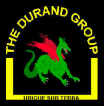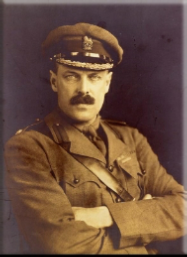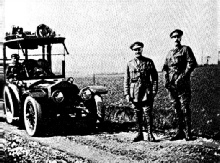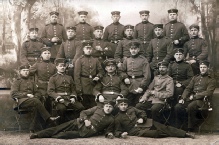
THE DURAND GROUP








With the establishment of trench warfare all protagonists gave consideration to the classic siege technique of attacking enemy defences by mining. On 3 Dec 1914 Gen Sir Henry Rawlinson, then Commanding IV Corps, wrote to Army HQ suggesting the formation of a special Battalion of Sappers & Miners for such work. Simultaneously the Dehra Dun Brigade of the Indian Corps attempted, unsuccessfully, to attack a German trench using a 45 lb charge of guncotton placed at the end of a shallow tunnel.
First honours on the British front went to the enemy. On 20 Dec 1914 a company from Pionier-Regiment 19 - German Sixth Army - attacked the Sirhind Brigade of the Indian Corps on the Givenchy-Festurbert front with 10 small bored mines placed under their forward fire trenches. Though small the physical and morale effect was considerable and the shaken survivors fell back 500 yds to the reserve line.
GHQ instructed the Army HQs to proceed with offensive sapping and mining. However the RE Field Companies (Fd Coys) were already overwhelmed with other essential duties. Corps, Divisions (Divs) and even Brigades (Bdes) made various extempore arrangements, collecting up men with mining experience and forming miscellaneous mining platoons and sections. Meantime the Germans continued to extend the use of mining and on 25 Jan 1915 the first company of Pionier-Bataillon Nr 14 (1/PiB.14) of XIV AK exploded 20 or so on the Cuinchy front, occupied at the time by both British and French troops, each with their own own mining contingents.
Major Norton Griffiths had already written to the War Office proposing formation of Special Companies of – what he termed – moles. As well as being an officer in the 2nd King Edward’s Horse, a regiment he had personally raised, Norton Griffiths was a Member of Parliament and the head of a large firm of international engineering contractors. In particular his firm employed many men digging tunnels for sewers below major cities in Britain, using a specialist technique known as ‘clay kicking’.
Following a reconnaissance in February 1915, and an interview with Lord Kitchener (Sec of State for War) Norton Griffiths, armed with almost plenipotentiary powers, was ordered to raise clay kickers and miners for service. The War Office authorized formation of 8 Tunnelling Companies, originally to comprise 6 Officers and 227 Soldiers. Qualified miners were to be paid at an astonishing rate of 7/6 per day (an infantry private received about 1/6). The first 18 Clay Kickers, the nucleus of 170 Tunnelling Coy, were enlisted on Thu 17 Feb 15 in Manchester, processed through the Royal Engineers Depot in Chatham, shipped to France and started work at Hill 60 on Mon the 21st of Feb 1915. This is probably the fastest ever formation from scratch and deployment of a unit to operations.
The build up of the mining companies followed quickly with enlistment of clay kickers, and men from other mining disciplines, and a comb-out of existing units for suitably qualified personnel. Commanding Officers (COs) were initially found from regular Royal Engineers, but most of the remainder were mineral miners from all over the world. By June 1915 the 258th Tunnelling Coy had been formed and deployed, but by then the mine fighting had developed in intensity, and raising and training further companies proceeded. The first Dominion Company in the Field was the Canadian 3rd Tun Coy RCE (raised from Canadian units in France) and deployed in December 1915.
At the start of the war the Germans relied solely on their field companies to provide mining services but as the war became more intense, men were detached from infantry units to form ‘Berg’ or mining companies that worked only in their own regimental areas. In April 1916, fully twelve months after the formation of the British tunnelling companies, the German High Command initially formed eleven bespoke companies of their own, numbered 291-300 and 309, ten from VII AK operating between Auchy and Neuve Chapelle. They were designated Pionier-Mineur-Kompagnien and had a similar establishment to those of the British. Further companies came on stream as the war progressed and most field companies of the German army reverted back to their traditional role.
A similar scenario existed in the French army whereby the divisional ‘Genie’ field companies took on the role of tunnellers and miners until specialist tunnelling companies could be formed.




All materiel on this site (except where indicated) is © Durand Group 2023

